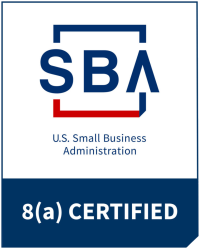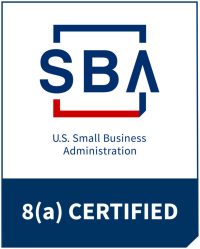The Easy Way Comes with Risks
Taking shortcuts can typically get us to our destination more quickly. Taking certain marketing shortcuts, however, can cause irreparable damage to your business image. Whether you are advertising on air, in print, or online, everything you do should be done well. Otherwise, you’ll end up with an expense that never gets recouped, and a business that struggles to survive.
Shortcut #1: An Ineffective Landing Page or Website
When it comes to advertising your business, it is better to be invisible than to be visibly unimpressive. We stumbled upon a sponsored ad on Google the other day. It led to one of the most ineffective websites you could imagine. There was no structure. It had a nonsensical menu system and used several font colors and underlined words across the page for emphasis. The worst part is, the phone number that was in huge letters and repeated multiple times didn’t connect callers to the company. It went to a referral company who, in turn, sent us to their competitor. Crazy, right?
[content_box box_type=”normal” title=””]The Point: Every penny spent on Google AdWords or with a referral agency is completely wasted unless you have a proper destination for the ad. The message matters, not just getting them there.[/content_box]Shortcut #2: Pointing People to Nowhere
Some people may have had a bad experience with online advertising and turned instead to print. We recently took a look at some Money Mailer ads to see what kinds of businesses are using this method. The industries vary, but one thing is common. An unbelievable number of them either didn’t list a website or the URL printed on the ad was no longer active. Nothing sends a message like pointing a potential customer to nowhere. Some didn’t even bother to include their business name! Seriously? Oh, and if you think including a Facebook icon on your site is a good idea, it is, but only if it goes to an account someone is actively running. A missing website or social media content can make it look like you are either out of business or you just don’t care to communicate. Both, of course, are costly.
[content_box box_type=”normal” title=””]The Point: Customers who search online to check the reputation of a business will quickly move on if the information is not there…even if the print ad was stunning. It is better not to lead them online, than to let them arrive at a vacant address. Making it “look” like you have a website or a Facebook presence does nothing to build your brand. In fact, it breaks it down.[/content_box]Shortcut #3: Settling for a DIY Website
You may have the time and aptitude to put together a website for yourself with a free website builder; but, “free” is what it is. The limitations of these sites make it obvious that you built it yourself. We’ve even run into sites that left blank placeholder pages on the site because “that’s what it came with”. Whether you do it well, or just do it, what that says to your potential customer is that you are not invested in your business. What it says to the search engines is that you don’t want to be found. Building a website properly is a marriage of technical and artistic expertise. And, a professional marketing strategy should be incorporated from the ground up to make it actually work for you. “Pretty” is just not enough.
[content_box box_type=”normalt” title=””]The Point: While it is tempting to throw together a website over a long weekend, you will pay for this shortcut in the long-run. You can’t expect a free website to have what it takes to make you millions.[/content_box]Shortcut #4: An Unmanned Phone or Email Account
The point of most advertising is to get someone to take action, and that usually involves contacting the advertiser. Just this week, we tried contacting a business using the email address listed on their website but it returned an “unknown user” error. In other businesses, we’ve seen the vast majority of incoming calls going straight to voice mail. If both methods of reaching your business fail, visitors will start to question your credibility. Most won’t give you a second chance. There are too many other businesses for them to choose from, so they will move on to the next one that provides the product or service they need without having to work so hard. You can’t get new business if you don’t make yourself available.
[content_box box_type=”normal” title=””]The Point: If a business is not contacted the first time a potential new customer reaches out, they have little reason to try again. When you need your hair cut, your teeth cleaned or your car insured, are you really going to leave a message?[/content_box]Shortcut #5: Ignoring SEO
Real SEO is one of two things. It is either the foundation of a website that tells search engines what a site is about, or it is this foundation plus a long-term campaign that lets businesses earn the right to be listed at the top of the results page. For absolutely any website created, a solid foundation is essential. It not only impacts how (or if) you are found, but also how your business is perceived by actual human visitors. You see, SEO is not just a bunch of tags, links and codes. It is a way of effectively communicating the nature of your business to both robots and people.
And, guess what? Keyword stuffing, tag clouds, multiple URLs, over-optimized internal links, and duplicate content are not only out…they’ve been out. If you still employ any of these archaic tactics, it doesn’t help. In fact, it will eventually get you penalized and it is meaningless to visitors. By the way, your onsite SEO also impacts your Google AdWords campaigns. A poor foundation or thin content will affect the quality score of your ads, making them show less and cost more. And one more thing…while onsite SEO is important, it is just the beginning if you want to make it to page one of Google. It does not replace the other 75% of the equation that gets you ranked at the top.
[content_box box_type=”normal” title=””]The Point: SEO is the sign on the road as well as the conversation when you get to your destination. If you take a shortcut around it, your potential customers will get lost…and so will your message.[/content_box]We see these shortcuts and more every day; but, you can’t skip third base and still get a home run! Need advice? We’re always here to help get you the answers you need to get the most out of your marketing efforts.




